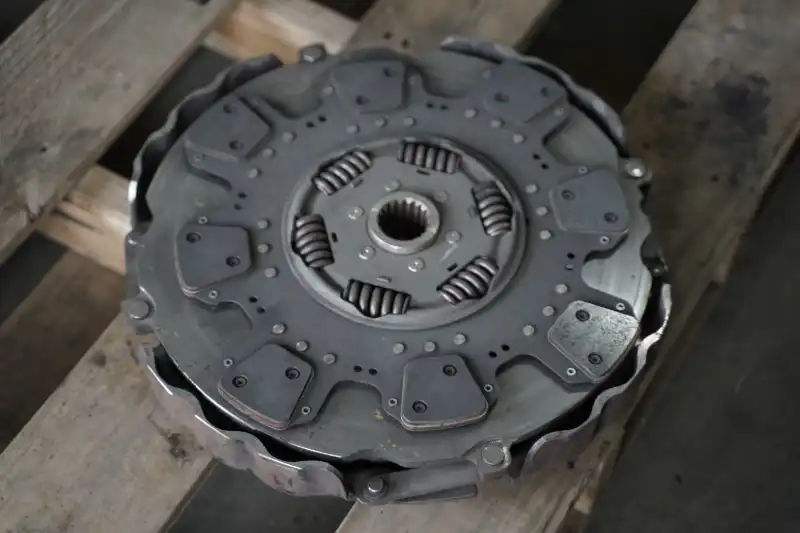
Failed a DOT Inspection? Here's How to Fix the Most Common Issues
Date
author
reading time
Commercial Motor Vehicle (CMV) inspections conducted by the Department of Transportation (DOT) are rigorous assessments ensuring compliance with established safety regulations. Non-compliance identified during a DOT inspection can result in substantial repercussions for heavy-duty trucking operations, including vehicle immobilization, financial penalties, and potential safety risks. Here at Myles Truck Repair, our expertise encompasses the complexities of DOT inspections. We can guide you through the process. This article delves into technical specifics, outlining how to rectify the most prevalent deficiencies that lead to failed DOT inspections.
Common Reasons for DOT Inspection Failures
1. Brake Systems
Heavy-duty truck brake systems are scrutinized during DOT inspections to ensure safe operation. Inspectors will assess lining thickness due to wear, meticulously examine air lines and components for leaks within the compressed air system, and verify the functionality of spring brakes, which act as both a parking brake and emergency backup system.
2. Tire Tread Depth
DOT inspections involve meticulous examination of commercial vehicle tires to guarantee safe operation. Inspectors will employ tread depth gauges to confirm compliance with minimum requirements, which are 4/32 inches for front tires and 2/32 inches for all others. Additionally, they will scrutinize the tires for any cuts, bulges, or other signs of damage that could threaten tire integrity.
3. Lighting and Reflective Devices
During DOT inspections, a vehicle's lighting and reflective components undergo rigorous assessments to ensure optimal nighttime and low-visibility operation. Inspectors will meticulously examine all lamps, including headlights, taillights, turn signals, and marker lights for functionality. Additionally, they will closely scrutinize reflective tape for any signs of damage or improper placement to guarantee sufficient nighttime conspicuity.
4. Cargo Securement
DOT inspections ensure cargo security on commercial vehicles. Inspectors check for proper use of straps and chains to prevent cargo from shifting during travel, promoting road safety for all motorists.
5. Emergency Equipment
During DOT inspections, emergency equipment readiness is crucial. Inspectors verify properly charged and accessible fire extinguishers, ensure reflective triangles are in good condition and stored correctly, and confirm a supply of spare fuses is readily available on the vehicle.
Detailed Steps to Fix Common DOT Inspection Issues
Brake Systems
Inspect and Replace Brake Pads
Inspecting heavy-duty truck brake pads involves raising the vehicle on a certified lift, removing wheels for direct access, measuring lining thickness, and replacing worn pads with new one, following manufacturer guidelines before reattaching the wheels and lowering the truck.
Test Brake Lights
DOT inspections scrutinize brake light functionality. Ensure all bulbs are operational by replacing burnt-out ones. Inspect wiring for damage and repair if necessary. With an assistant pressing the brake pedal, verify all brake lights illuminate correctly.
Tire Tread Depth
Measure Tread Depth
DOT inspections require measuring tire tread depth with a gauge. Simply insert the gauge into the grooves and read the measurement. Replace any tires below the minimum depth to ensure safe operation.
Inspect for Damage
DOT inspections visually check all tires for cuts, bulges, or uneven wear. Any damaged tires must be replaced to guarantee safe travel.
Lighting and Reflective Devices
Test All Lights
Ensure all vehicle lights function properly during regular inspections. Activate headlights, taillights, turn signals, and marker lights. Replace burnt-out bulbs and check for blown fuses, making replacements as needed.
Inspect Reflective Tape
DOT inspections verify that reflective tape is in good condition. A visual check ensures that all pieces are present and undamaged. Replace any missing or worn tape to enhance other drivers' nighttime visibility.
Cargo Securement
Use Proper Securement Devices
DOT inspections ensure cargo is safe. Inspectors verify you're using straps/chains rated for the weight and that cargo is properly secured to prevent shifting during travel.
Regularly Inspect Securement Devices
DOT inspections involve checking cargo securement devices for wear and tear. This includes a visual inspection for frayed straps, rusted chains, and broken binders. Replace any damaged devices to ensure safe cargo transport.
Emergency Equipment
Check Fire Extinguishers
DOT inspections require verifying fire extinguisher functionality. Ensure the pressure gauge indicates a full charge and replace or recharge the extinguisher if necessary to maintain fire safety readiness.
Inspect Reflective Triangles
DOT inspections ensure reflective triangles are undamaged and stored correctly with a quick visual check and replacement if needed.
Stock Spare Fuses
DOT inspections involve checking the fuse box for blown fuses. Maintain a readily available supply of various spare fuses in the truck to address any electrical issues that may arise.
Preventative Maintenance Tips
Preventing DOT inspection failures hinges on a proactive maintenance approach. Regularly inspect your truck's critical components, including brakes, tires, lights, and cargo securement. Aim for weekly checks or inspections before long trips. This allows you to catch minor issues before they escalate into major problems that could lead to a failed inspection and potential downtime.
Furthermore, adhering to a manufacturer-recommended maintenance schedule is crucial. This ensures your truck remains in top condition. Regular oil changes, filter replacements, and other routine maintenance tasks keep your vehicle operating safely and efficiently, reducing the likelihood of encountering problems during a DOT inspection.
Conclusion
Failing a DOT inspection doesn't have to be a significant setback. You can keep your truck compliant and on the road by addressing the common issues that lead to failures and maintaining a rigorous preventative maintenance routine. At Myles Truck Repair, we're here to support you with expert maintenance and repair services. Contact us today to schedule a service and ensure your fleet meets all DOT standards.
more articles
Join us on this expedition through the realms of thought-provoking narratives, practical advice, and the latest trends, as we strive to be your go-to source for inspiration and knowledge.
our Truck Repair Shop locations
Come visit us at any of our 2 locations, with shops in Auburn and Fayetteville. We provide extensive service to Atlanta, Marietta, Athens, & more!


